HTC One max Review - It's Huge
by Brian Klug on October 28, 2013 10:00 AM EST- Posted in
- Smartphones
- HTC
- Mobile
- One
- Snapdragon 600
- Android 4.3
- One max
The One max joins a small but growing list of phones that include a fingerprint scanner for unlocking the device. I’ll leave the discussion about whether fingerprints are fundamentally usernames or passwords for another day, but fingerprint scanners seem to be in vogue right now for mobile phones. You could make the case that the perceived increase in security that comes with fingerprint scanners is both an enterprise or consumer play, again I’ll leave that philosophical discussion for another day. I remember the Motorola Atrix and its fingerprint scanner being a big deal a while ago, since then we’ve had the iPhone 5s dramatically reintroduce the fingerprint scanner and now the One max follow suit.
The One max fingerprint sensor is a swipe type, meaning there’s some kind of strip sensor inside that you swipe your finger across. Sliding your finger over this strip allows the module to scan a 2D region and extract features that are then used to identify a fingerprint. The One max hides this scanner inside a black square that’s slightly recessed on the back of the device, just beneath the camera. I’m reminded somewhat of the LG G2 and its rear-mounted power and volume buttons which also sit just beneath the rear-facing camera. Perhaps that’s a missed opportunity for LG, which could have also gone with a swipe type sensor in its power button. On the One max anyhow there’s no button, just the sensor. Although the fingerprint sensor is recessed slightly, it’s somewhat difficult to locate with just one’s index finger, something that results in inadvertent smudging of the rear-facing camera cover glass, something that didn’t happen as much with the G2 because there’s a larger lip and easily locatable bump.
The placement of the fingerprint sensor makes sense given that of the power button. As stated earlier for right handed users this means your index finger sits naturally near the sensor if your thumb is on the power button. Since the fingerprint button still requires activation to unlock the One max, you still need to press power to turn it on before you can swipe your finger and finally unlock it. I find myself wishing the fingerprint sensor was itself a button, something like the iPhone 5s, so unlocking could be as simple as pressing and swiping with the same finger. On the iPhone 5s the best activation pattern is pressing the home button and leaving the finger in contact with the button.
Setup requires you to set a passcode, after which a few training swipes trains the sensor for the finger you’ve chosen. Although the animation that plays shows the finger aligned along the long axis of the phone, for greater accuracy I trained the One max with my finger at the angle it would naturally be given my thumb on the power button. The only requirement given the swipe sensor is that the slide motion is straight down and not skewed.
The One max fingerprint sensor allows for up to 3 fingers to be paired, each able to either unlock or have the option of both unlocking and launching an application. I like the idea of fingerprints as shortcuts, something the iPhone 5s implementation lacks, but three fingers seems like a curiously low number given the ten digits humans have to work with. On the other hand, the placement of the button really limits you to middle and index fingers being viable options. In terms of functionality, although Apple doesn’t yet use fingerprints as shortcuts, Apple does use the fingerprint scanner to authenticate iTunes, iBooks, and App Store purchases, something HTC can’t quite do with the One max for Google Play purchases, at least until Google makes an API for it.
I initially trained the fingerprint sensor with my index finger being swiped straight down, and had some issues with unlocks requiring multiple swipes. Doing finger enrollment and training at an angle closer to how I actually swipe it naturally (at an angle) made the accuracy better, but the reality is that unlocking the One max still requires multiple tries more often than not. There isn’t much processing latency after a scan, but I had hoped the One max sensor would be tap and hold rather than swipe given its shape. I’m not clear what suppliers are involved for the sensor, but I’m told the One max also securely stores just the extracted features and not the fingerprint images (which is a no brainer). I haven’t delved much into the infrastructure used to secure the fingerprint features yet either. I’m also not sure whether the One max learns additional parts of the finger which wasn’t part of initial training the same way Apple’s does.
Although I don’t think anyone has totally nailed the fingerprint sensor yet on a device, the One max implementation definitely is further from perfection than Apple’s. Although it does work reasonably well, it still isn’t the transparent kind of convenience that I feel will compel users who ordinarily wouldn’t have to used a passcode to go and use the fingerprint scanner. I’ve continued using the fingerprint scanner on the One max, however.


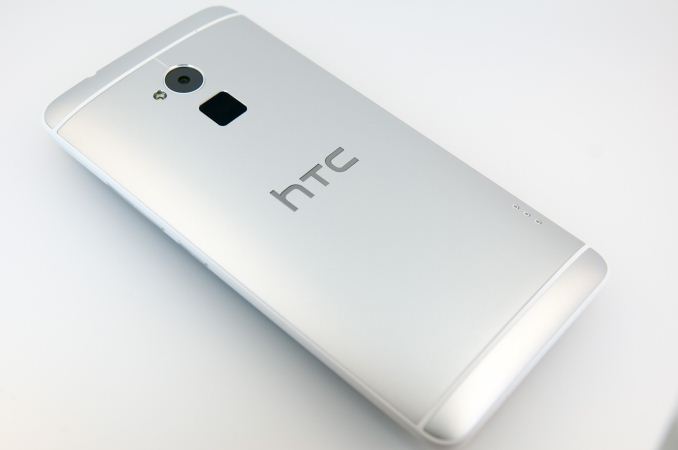
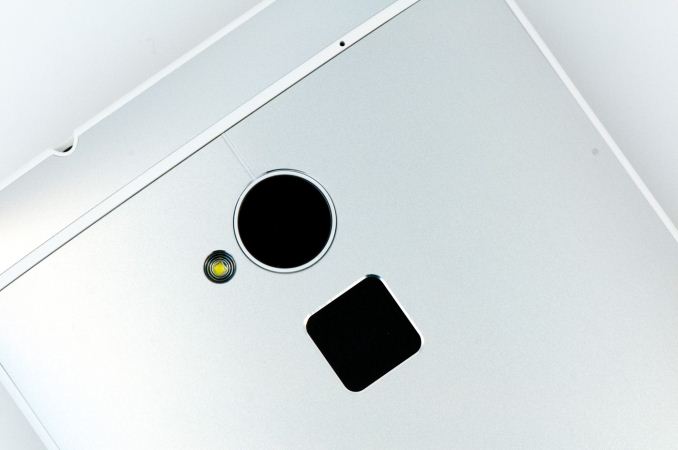
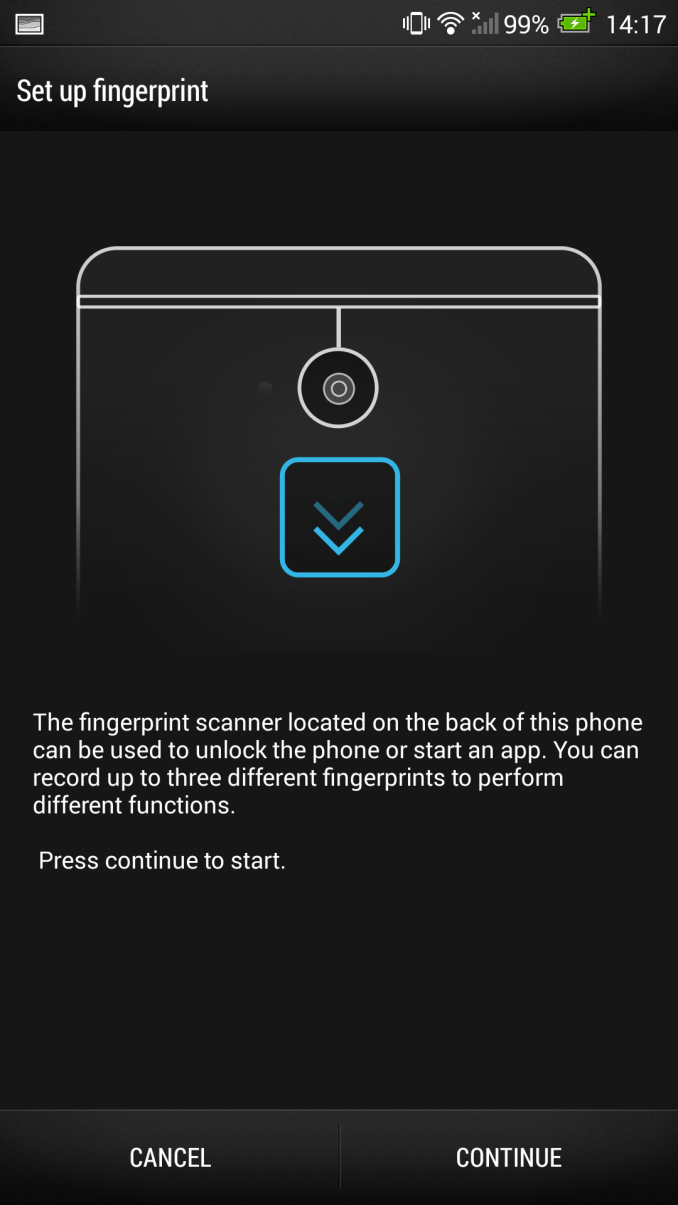
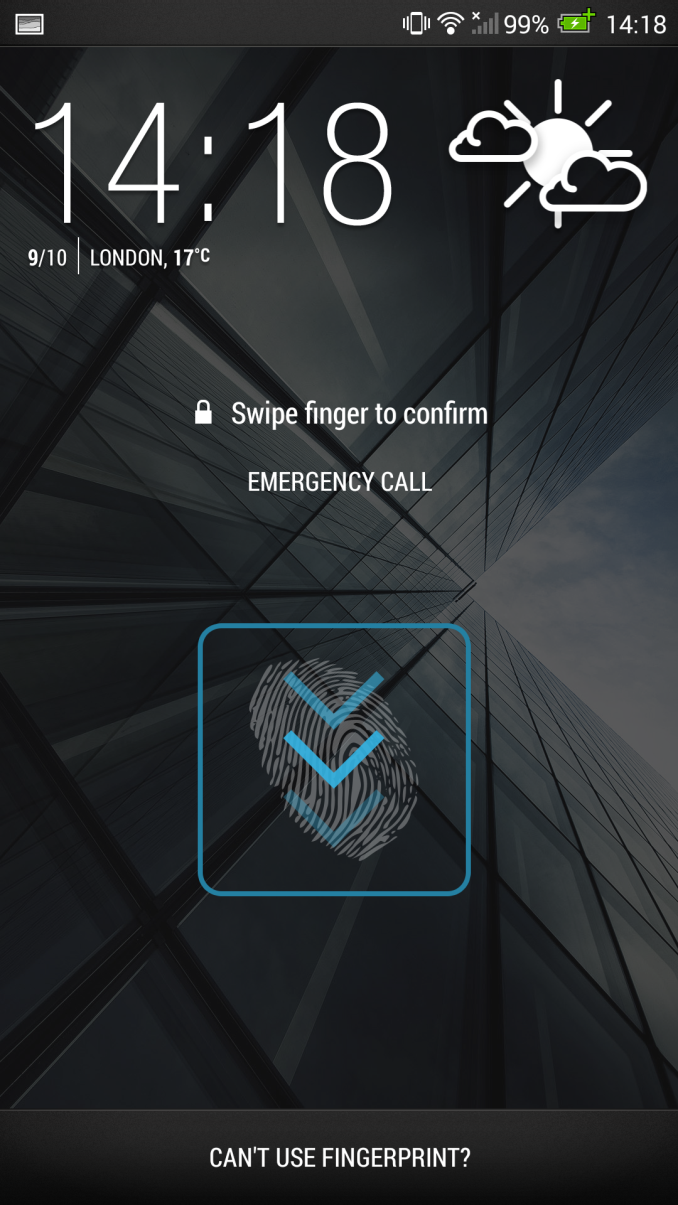

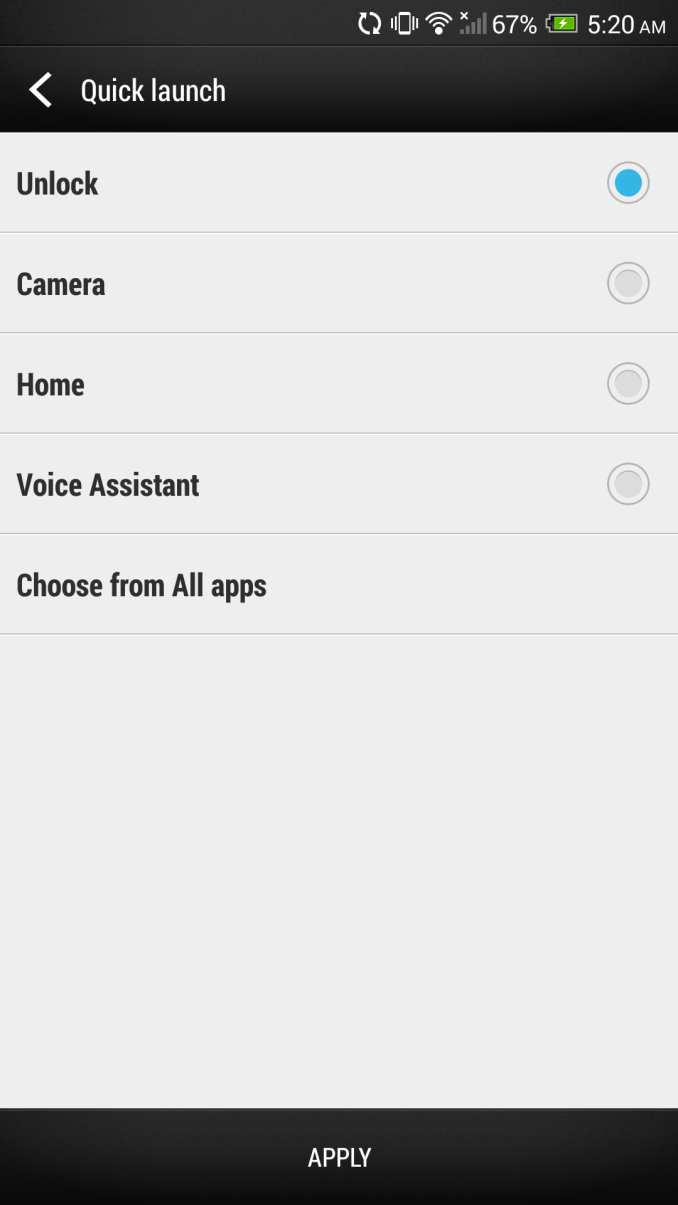








197 Comments
View All Comments
steven75 - Thursday, October 31, 2013 - link
You realize that Google itself dropped SD support from Android, right? Something Brian has mentioned numerous times, yet here you are again making the claim that "Apple is perfection" like a true troll.PC Perv - Tuesday, October 29, 2013 - link
And you have no issue with OEMs charging extra $100 per each incremental storage size? Sure you get free phones and lots other perks so perhaps that is why you are so understanding of the OEMs. But have you thought about this nonsense from consumers' point of view?I am guessing no. Every other pages are filled with the author's worry and concern about OEM's margins or market share. Why do you care? Why should I care about their cost savings? This has been the trend of this site for a long time. Unbelievable amount of corporate favoritism plus unapologetic ignorance on users.
rabidkevin - Tuesday, October 29, 2013 - link
I'm sorry, but you make zero sense.sherlockwing - Monday, October 28, 2013 - link
You can purchase 13000 mAh External battery packs for $37 weighing 0.9lbs, a far better option than a extra battery for GS4.Dentons - Monday, October 28, 2013 - link
And I can purchase 4, 3100 mAh Galaxy Note II batteries for about half that. All 4 together weigh just .47 pounds (54 grams each, 0.11 lbs each)All together, the four of them take up less space than any external battery pack I've ever seen. If I'm only going to be gone overnight, I need only take 1 spare. With all 4 and the battery in the phone, I can usually operate for a solid week without recharging once.
A user replaceable battery is also a hedge against the planned obsolescence of built-in batteries. Batteries wear out, the have a very finite number of cycles. A battery that will no longer hold a charge is one of the leading reasons consumers buy new phones.
User replaceable batteries and micorSD are as much about reducing consumer costs as anything else. It isn't difficult to see why reviewers awash in a torrent of new, free, phones aren't particularly enamored in these features. They don't use phones for 2+ years. They don't pay for the larger memory models. They don't wear out batteries.
chizow - Monday, October 28, 2013 - link
Agree with pretty much everything you've written in all of your replies. The fact that this comment section is dominated by comments disagreeing with Brian's position on microSD should say something, but I doubt it will have any lasting impact on his opinion of the matter.It's a good thing device makers seem to be going in the opposite direction, all I see now are devices adding the functionality.
superflex - Tuesday, October 29, 2013 - link
Alinsky tactics.Attack the messenger when the message is not what you want to hear.
Grow up.
Gadgety - Monday, October 28, 2013 - link
It's funny - when reading negative comments on HTC phones these days I can't help but think it's Samsung sponsored comments (BTW I have a Samsung phone).ddriver - Monday, October 28, 2013 - link
I wish samsung paid me :) Dunno about paid comments, but there sure are a lot of paid reviews, and I don't mean paid by samsung,I think negative comments towards this device are well justified, it goes beyond the reasonable size and hardware is ... previous gen at best. Given all this space to cram components in, this phone should have been much, much better. Alas, htc is no samsung that produces everything and no apple to exploit fanatical brand loyalty, so the only way to keep profit margins decent while keeping the price "reasonable" is to offer cheaper and slightly out-of-date hardware.
Sm0kes - Monday, October 28, 2013 - link
He's not talking about the validity of the criticism, but instead the relentless "shill" type comments that constantly bring up Samsung in every discussion.FYI - Samsung was being investigated by the Taiwan's FTC back in April for paying student "shills" to slam HTC and advocate for Samsung on tech review sites. Google for the link. It's pretty clear Samsung's marketing is pretty scummy.